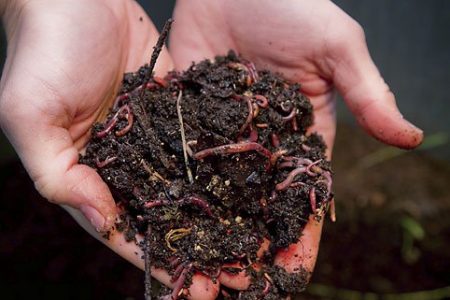Lesson Objective — Students will learn what redworms utilized for vermiculture eat and the conditions necessary for their survival.
Subject Area — Life Science
Grade Level — Grade 6 through 12 Alaska Science Standard SC2.3
Season to be Best Complete Lesson — This lesson can be done anytime during the school year redworms are available.
Time to Complete Lesson — It will take about 30 minutes to complete the lesson.
Materials Needed
- The instrucor will need a Redworm compost box that been operative for several months.
- Paper Plates
- Damp Paper Towels
- Magnifying glasses
- Q-Tips or Toothpicks for each student
- Recording sheet – This sheet can be found at the end of the lesson plan.
- Optional – plastic gloves for students
Procedure
It is assumed the students have some familiarity with the practice of vermiculture. In my school, students feed the worms daily. Though they feed them, they need to learn some general information about worms.
- First students will briefly learn some basic information about worms. Remind students the bin is like an ecosystem.
- Worms are important to soil formation.
- Worms recycle and reuse what other organisms do not utilize.
- Hand out a paper plate size pile from the inside of the worm box. Students should work in groups of two or three. Each group should have the materials listed above. Remind students to be gentle with any redworms on their plate and that the worms do not like light very much. The damp paper towels can be utilized to protect the redworms. They should use the recording sheet to list everything they can see in the pile, attempting to assign a percentage to each item seen.
- What kind of food pieces do they see?
- What kinds of bugs do they see?
- Describe the castings.
- When students have completed their examination of their pile, have them carefully return to the items to the bin. Then the whole class can compare what each group found. Did some groups find different items than others? Is there some food that does not seem to be eaten by the worms?
- Discuss what students think redworms need to eat, based on their observations. Discuss what environment is needed for worms to live successfully.
- Moisture criteria
- Bedding
- Light and air needs
- Types of food
- Pass out this handout which explains what type of foods redworms like to be fed. Discuss what the group concluded versus what is on the handout.
Lesson Extensions
Students can investigate worm anatomy and how a worm processes their food.
Teachers can send some worm castings to be tested for nutrient content.
Bibliography
Alameda County Waste Management, comp. “Do the Rot Thing.” (n.d.): n. pag. Jan. 2007. Web. 12 July 2016. https://www.cvswmd.org/uploads/6/1/2/6/6126179/do_the_rot_thing_cvswmd1.pdf
Lowenfels, Jeff, and Wayne Lewis. Teaming with Microbes: The Organic Gardener’s Guide to the Soil Food Web. Portland, Or.: Timber, 2010. Print.
Compost Recording Sheet
Name___________________________
REDWORM COMPOST RECORDING SHEET
Carefully observe the worm castings to see what you can see.
Record and describe every object you see in your pile.
Do you see familiar food? Do you see bugs? Describe the compost.
| Item | Description |
